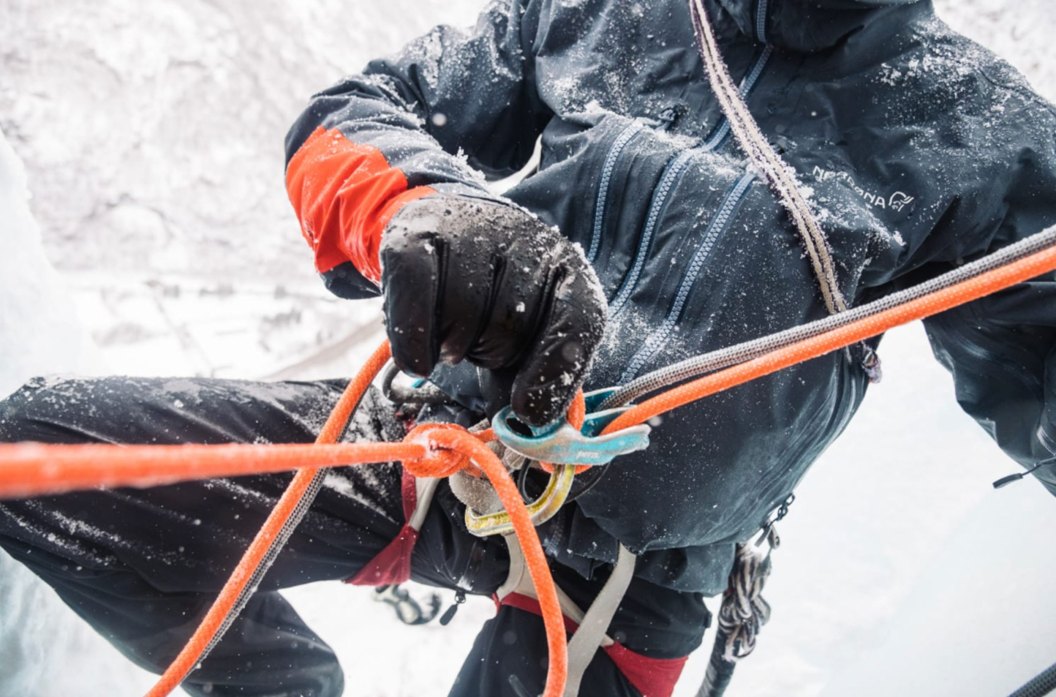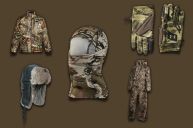For myself and countless others, there are few things better than spending a winter day outside, whether ice fishing, exploring hiking trails on snowshoes, or flying downhill on skis. Conversely, there are few things worse than dealing with freezing cold hands from wearing poor-quality or inadequate gloves. Not only is it incredibly uncomfortable, but cold extremities can lead to frostbite.
Luckily, winter gloves come in a variety of materials and levels of warmth with some designed for specific climates or outdoor activities to keep your hands warm and protected while maintaining functionality. I'm a mountain guide and an Alaska resident, spending most of my year living and working in wintry weather. I've tried just about every glove on the market in every condition imaginable—and I suffer from poor circulation. Therefore, I can recommend the best winter gloves for all your cold-weather activities and snow sports alike.
The Best Winter Gloves of 2024
- Best Overall: Flylow Ridge Gloves OG Baked
- Best For Extreme Cold: Black Diamond Guide Gloves
- Best Winter Work Gloves: Kinco Lined Heavy-Duty Premium Grain & Suede Pigskin Ski Glove
- Best Budget Winter Work Gloves: Carhartt Waterproof Insulated Gloves
- Best for Wet Conditions: Showa Temres 282 Insulated Gloves
- Best Heated Gloves: Outdoor Research Prevail Heated Gore-Tex Gloves
Best Winter Glove Overall
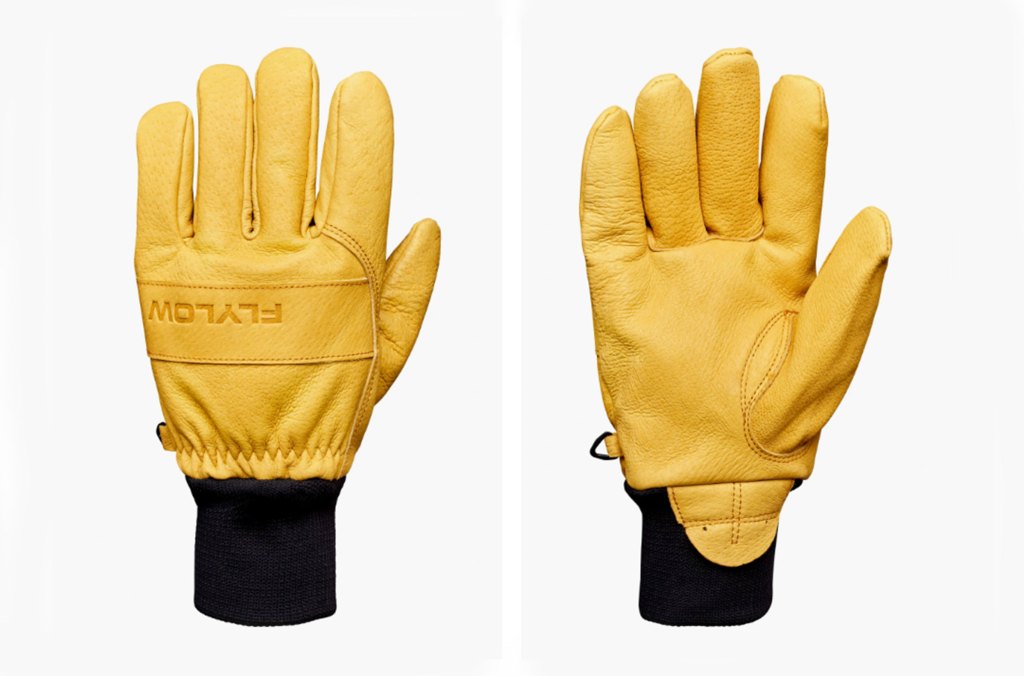
Flylow
Top Pick: Flylow Ridge Gloves OG Baked
Sizes: Men's/Unisex XS to XXL | Weight: 4.9 ounces | Materials: Pigskin leather with polyester lining | Waterproof: Yes | Colors: One, natural leather
As a mountain guide with a history of frostbite and poor circulation, I spent years searching for a glove that gives me the dexterity I need for work and the warmth I need to keep my fingers safe. I'd just about exhausted all options until a friend lent me a pair of Flylow Ridge Gloves. From the moment I put them on, I knew I had found my Goldilocks pair. I immediately bought my own.
The leather is soft and feels broken in from first wear, with plenty of dexterity in the fingers for fiddly work. The insulation is warm, the wrist cuff soft, and the gloves simple and basic in design. They keep my hands comfortable in a wide range of conditions, from just above freezing to temperatures that dipped well below 0.
My Flylows have endured a few years of backcountry skiing, winter car maintenance, shoveling, and mountaineering. They're my number one choice for both work gloves and technical winter gloves. While they haven't lost any of their integrity in terms of insulation and dexterity, the leather has cracked and scuffed considerably. They've required a few additional waterproofing wax treatments to keep them moisture-resistant which, while easy to do, is an extra maintenance step to remember.
- Comes in a wide range of sizes for both small and large hands
- Durable leather is both soft and flexible
- Hard, abrasive work can scuff, nick, and even pierce the leather
- Requires wax treatments to maintain waterproofing
Best Winter Gloves for Extreme Cold
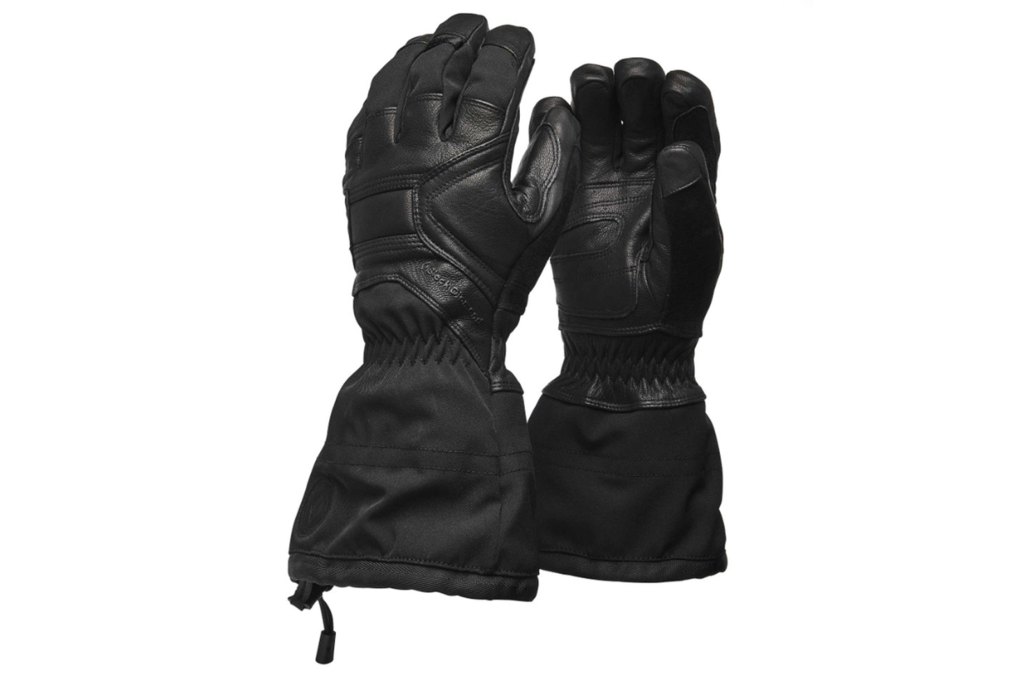
Black Diamond
Top Pick: Black Diamond Guide Gloves
Sizes: Men's/Unisex XS to XXL | Weight: 11 ounces | Materials: Goat leather, fleece, and synthetic insulation | Waterproof: Yes | Colors: Two, black and natural/tan
Black Diamond markets its Guide Gloves as its warmest professional-grade ski gloves, and I—as well as other Denali guides—agree. They're my go-to pair of gloves for the coldest days when I need to retain as much good dexterity as I can. They're equally good for cold days on the ski lift or on the lake ice fishing. If they aren't able to keep your hands warm, you probably should be wearing mittens.
The Guide Gloves are extremely durable and waterproof, with a tough leather palm and a long, gauntlet-style cuff that covers half of my forearm (though it still offers plenty of coverage for folks with longer limbs). They also have a removable liner, a must-have for multi-day winter backpacking trips where your gloves may get wet. Taking the insulating liner out of the shell makes drying much faster.
Because they're so warm and somewhat thick with PrimaLoft insulation, you'll have a hard time zipping up your jacket or doing other small fiddly tasks while wearing Guide Gloves. They also take some time to break in, so buy them and wear them well before your next big trip.
- Incredible warmth for a glove
- Extremely tough and durable
- Removable glove liner makes drying a breeze
- Not the most dexterous gloves for fine tasks
- Heavy and don't compress well in a backpack
- Takes time to get used to and break in
Best Winter Work Gloves
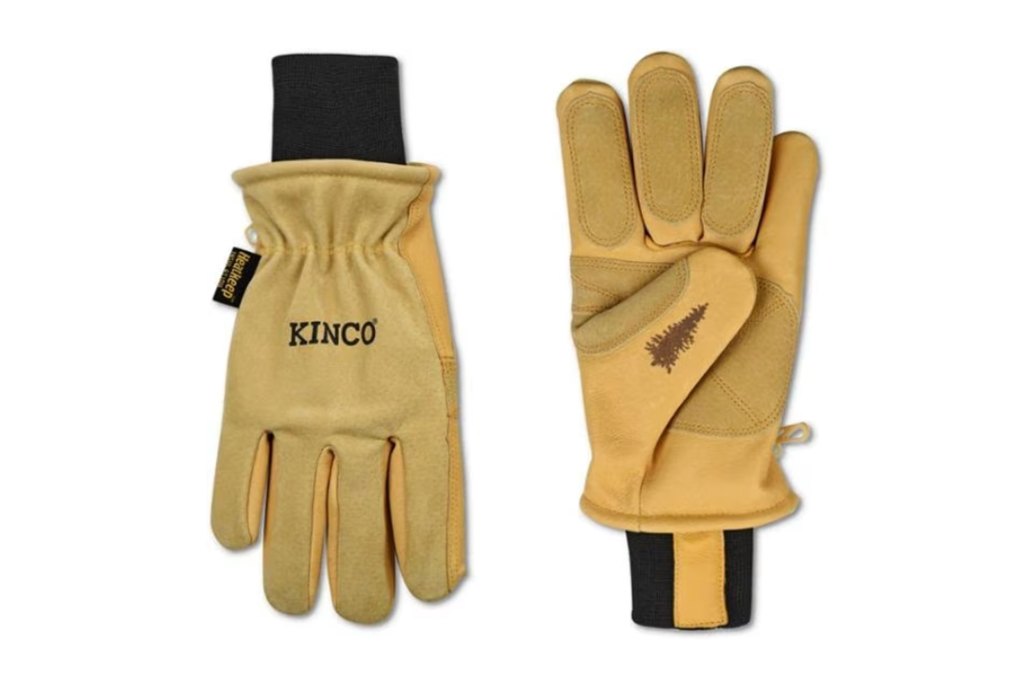
Kinco
Top Pick: Kinco Lined Heavy-Duty Premium Grain & Suede Pigskin Ski Glove
Sizes: Men's S to XL, Women's S to L | Weight: 5.6 ounces | Materials: Pigskin leather and suede with synthetic thermal lining | Waterproof: Yes, with wax added | Colors: One, natural/tan
Kinco gloves, which first came out in 1975, have been the ubiquitous work glove for as long as I can remember. My dad wore them when I was a kid, and now just about every skier and outdoor worker I know wears them, too. While the brand has a wide variety of gloves to choose from, the Premium Ski Glove is my favorite winter work glove. The pigskin leather is reinforced along the palms and fingers and is surprisingly dextrous given how warm the gloves are.
Kincos, like most all-leather gloves, require an extra step to keep them waterproof: rubbing wax into the leather. Thankfully, this is relatively easy, and Kincos provides the wax.
- Warm, with a proven record of almost 50 years
- Easy to find at hardware stores
- Reinforced palm and fingers
- Requires wax to waterproof the glove
Best Budget Winter Work Glove
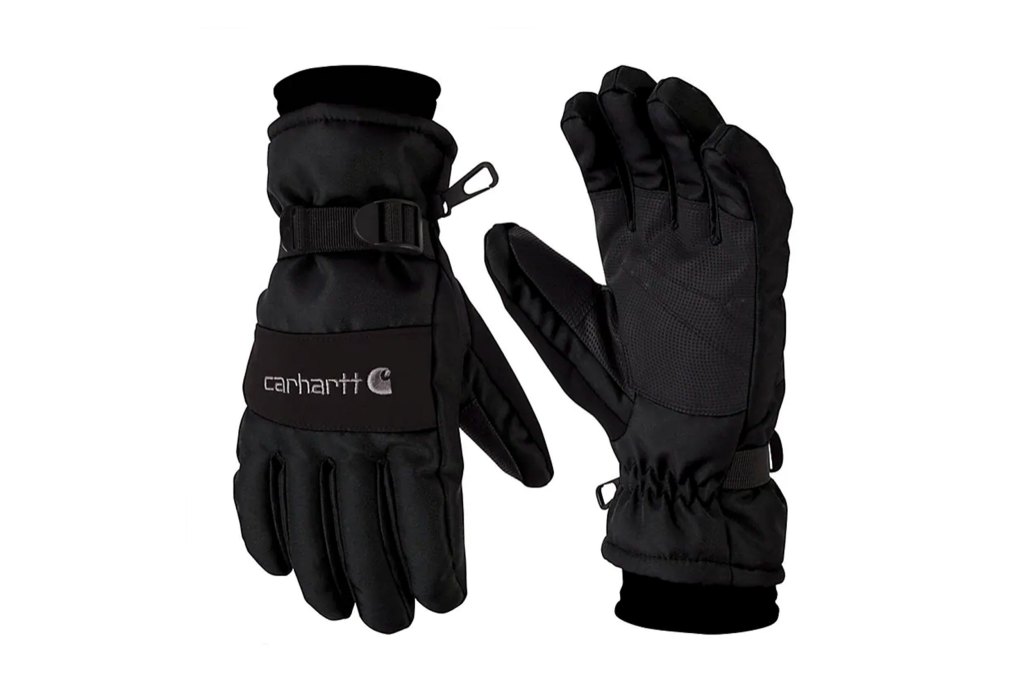
Carhartt
Top Pick: Carhartt Waterproof Insulated Gloves
Sizes: Men's S to XXL | Weight: 5.9 ounces | Materials: Synthetic shell and fleece cuff and lining | Waterproof: Yes | Colors: Two, black and brown/black
If you're looking for a cheap pair of warm gloves that will keep you toasty when shoveling the driveway, the Carharrt Waterproof Insulated gloves are for you. The gloves are windproof and waterproof, keeping your hands warm and dry in any condition. They also have a cinch around the wrist, keeping snow from falling into the glove.
Don't expect much in the way of bells and whistles, though: The Carhartt gloves are about as simple as they come. The fabric isn't as sturdy as leather, and the gloves only come in men's sizes, making them unsuitable for smaller, slimmer hands. The gloves aren't as breathable as the Flylows or Kincos and, because they don't have a removable liner, can be difficult to dry out after a long day.
- Well-insulated and warm for the price
- Flexible, comfortable material
- Cheap and easily replaceable
- Only come in men's sizes
- Thick fingers make them not very dextrous
Best Winter Gloves for Wet Conditions

Showa
Top Pick: Showa Temres 282 Insulated Gloves
Sizes: Men's/Unisex M to XXL | Weight: 3.5 ounces | Materials: Polyurethane shell and acrylic lining | Waterproof: Yes | Colors: One, blue
While Showa gloves look more like something you'd wear to do the dishes rather than enjoy activities outside in the winter, they're this mountain guide's choice to handle the wettest weather. With a completely waterproof outside and warm insulation on the inside, these gloves can handle wet winter conditions, be they rainy days in the Pacific Northwest or blizzards on the East Coast.
Showa gloves are from Japan, where they're popular with hikers, backcountry skiers, and fishermen. Their waterproof polyurethane shell is impressively durable, with a textured, grippy palm. Showas are also impressively dextrous for their material, and I use mine for everything from shoveling the driveway to winter fishing.
Because of the dish-glove similarities, they aren't the most technical gloves; they don't have any fancy features like reinforced palms or cinching cuffs. Despite being marketed as breathable, my hands are prone to sweating quickly in them on warmer days and, because of the polyurethane shell, the gloves are slow to dry out. However, at around $20 and 3.5 ounces, Showas can't be beat price- or weight-wise.
- Polyurethane shell is completely waterproof
- Cheaper than most winter gloves
- Dextrous enough to work in
- Though breathable, the shell can hold in sweat
- No cinching cuff to keep snow out
- Unisex sizing may be large for those with small hands
Best Heated Gloves
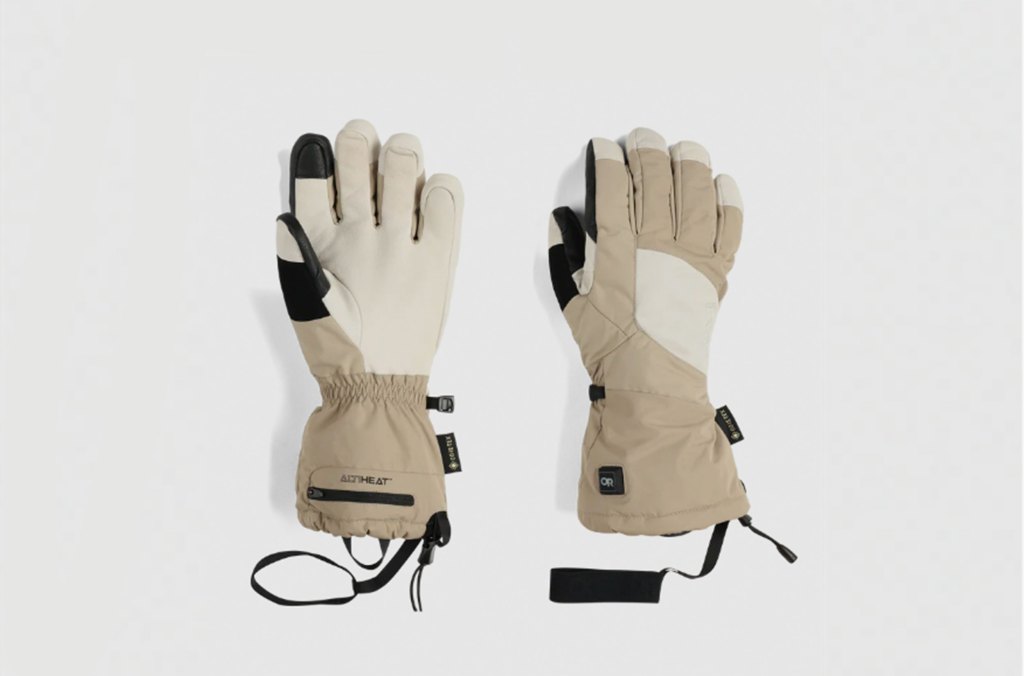
Ourdoor Research
Top Pick: Outdoor Research Prevail Heated Gore-Tex Gloves
Sizes: Men's/Unisex S to XXL | Weight: 11.5 ounces | Materials: Gore-Tex and leather shell with fleece lining | Waterproof: Yes | Colors: Two, black and brown-black
If you have particularly cold hands, a pair of heated gloves may be the best option for you to keep you comfortable on cold days. Outdoor Research's Prevail Heated Gore-Tex Gloves are one of the best pairs I've tried, with heat provided by rechargeable lithium batteries.
The battery life is relatively impressive: They last 8 hours on high, 5 hours on medium, and 2.5 hours on high. While this is plenty for a day trip, I wouldn't use the gloves on a winter backpacking trip. (Heated glove batteries also interfere with avalanche transceivers, so you shouldn't use these gloves if you're a backcountry skier.)
Beyond providing their own heat, the gloves have a few special features, like touchscreen compatibility that lets you use your phone without taking them off. When you're not wearing them, a glove clip and removable wrist leash help keep you from losing them—a good thing, considering their high price.
- Incredibly warm while also having touchscreen compatibility
- Glove clips and leashes keep the gloves attached to you
- The battery lasts 8 hours on low and 2.5 hours on high
- Far more expensive than other gloves
- Only available in unisex/men's sizes
Other Winter Gloves We Considered
Hestra Army Leather Gore-Tex ($190): Hestras are phenomenally warm, durable gloves that are a favorite among skiers and snowboarders. However, they don't come cheap and the glove liner isn't removable, so drying them out can take a long time.
The North Face Denali Etip Glove ($50): These have a few nice features, including a zipper along the back of the glove that makes it easy to get on and off and an overall construction of recycled materials. Though a great choice for urban adventures, the fleece fabric lacks the waterproofing and warmth needed for the backcountry.
Norrona Trollveggen Gore-Tex Gloves ($229): Norron Tollveggen gloves are renowned for their light weight and incredible warmth. If not for the price, they may be a contender for the warmest gloves for extreme cold. However, they're by far the most expensive, non-heated gloves I found. I prefer to save $50 on the tried-and-true Black Diamond Guide Gloves.
What to Look For When Buying Winter Gloves
Whether you're a backcountry skier, an ice fisherman, or just looking for some gloves to get you through your commute, consider a few things before buying your next pair of winter gloves. Different gloves are designed for vastly different needs and preferences, and you'll want to make sure you're choosing a pair that fits yours.
Gloves are generally composed of two parts: the outer shell and the inner liner. Materials for each differ from brand to brand and depending on the intended use. Shells are often made of natural materials like leather (especially for work gloves), or synthetic materials like polyurethane and Gore-Tex. Synthetic shells are usually waterproof on their own, while leather requires wax to be fully waterproof. Glove liners are typically made of fleece, wool, or synthetic insulation like Thinsulate.
"Softshell" gloves—often made of woven layers of polyester or nylon with fleece liners—may offer wind-resistance and water-resistance, but while moisture-wicking, these gloves are not waterproof. On the other end of the spectrum, neoprene gloves offer extreme waterproofing in wet conditions though may hold in sweat, too.
Some gloves don't have a shell and are just made from one material, like fleece gloves or merino wool gloves. These offer some warmth on their own in cool weather but are best used as liner gloves in colder temps.
Some gloves, particularly synthetic gloves, feature liners that may be removed. This is worth considering because, for one, it makes them easier to wash. In addition, because the shells of these gloves are typically waterproof, they also don't offer much breathability, making it difficult for glove liners to dry out if they become soaked with sweat or precipitation that wicks in from the cuffs. Removable liners become particularly important if you're spending several days in the backcountry where your only option for drying them is inside your sleeping bag.
If you mainly use your gloves in the front country and won't be carrying them in a backpack, their weight is of little concern. That said, I mostly use my gloves in the backcountry and often carry several sets of gloves and mittens, so I prefer gloves that are light and packable, as every ounce matters.
Many synthetic gloves, like the Black Diamond Guide Gloves and the Outdoor Research Prevail Heated Gloves, are fully waterproofed already by nature of the shell fabrics they're made with. Leather gloves, like the Flylows and Kincos, are naturally water-resistant but require regular application of waterproofing treatment—a wax that typically comes with them—to keep from soaking through.
Other special features to consider include cinched wrists, leashes, buckles, keeper clips, and fleece on the back of the hands for wiping your nose (yes, really). If you're mostly using your gloves for front-country activities, like ice fishing or skiing at the resort, you may appreciate gloves with all the features you can get. Because I mostly use my gloves in the backcountry, I prefer simple, streamlined gloves that are lighter and less likely to have parts break.
Your Questions, Answered
The warmest winter gloves that I've used are the Black Diamond Guide Gloves. They've gotten me through temperatures down to -20°F at 17,000 feet. Outdoor Research Prevail Gloves are also a great option if you're looking for heated gloves, though they will only radiate their own heat for up to eight hours on a charge.
Winter gloves vary widely based on their intended purpose and the conditions they're best suited for. If you're primarily using your gloves for outdoor work, go with leather gloves like Flylows or Kincos. If you'll be in very wet conditions, choose fully waterproof gloves like Showas.
Tight, constricting gloves can cut off your circulation and make your hands feel colder faster. Because of this, I typically size up my winter gloves a little so that my fingers have plenty of room to move without the gloves slipping off my hands and so I can add thin liner gloves underneath on truly cold days. You don't want to go too big, however, as that may affect your dexterity and create a lot of dead space in the gloves, which will make your hands colder. For this reason, I recommended gloves that have a wide range of sizes so I can choose the perfect
Who We Are
As a professional mountain guide and year-round resident of Alaska, I spend most of the year wearing gloves. For my guide work, I use my fingers for everything from tying ropes, clipping carabiners, and lighting stoves. I also have Raynaud's Syndrome, a condition of poor circulation in my extremities that makes me more prone to frostbite. Because of this, I've spent years looking for the warmest, most dextrous gloves on the market and have put just about every glove out there through everything winter in Alaska can throw at them.
Editor's Note: Products featured on Wide Open Spaces are independently selected by our editors. However, when you buy something through our links, we may earn a commission.
